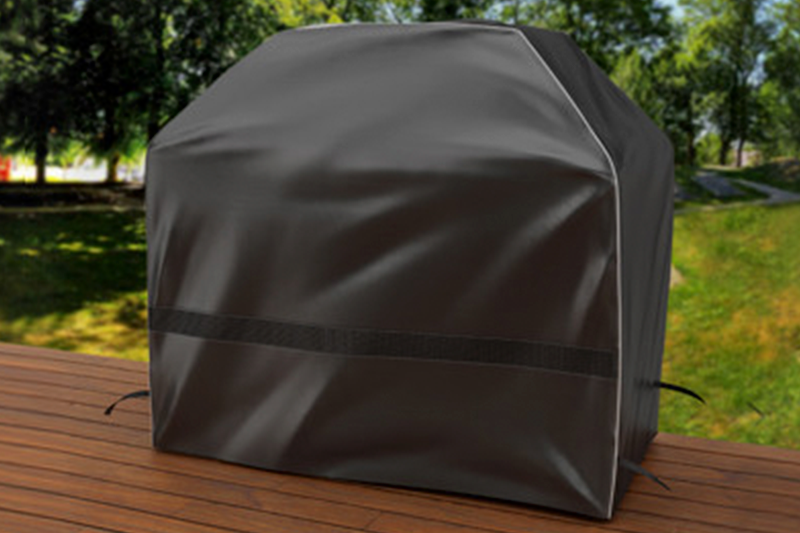CLEAN AND SAFE!
February 18, 2014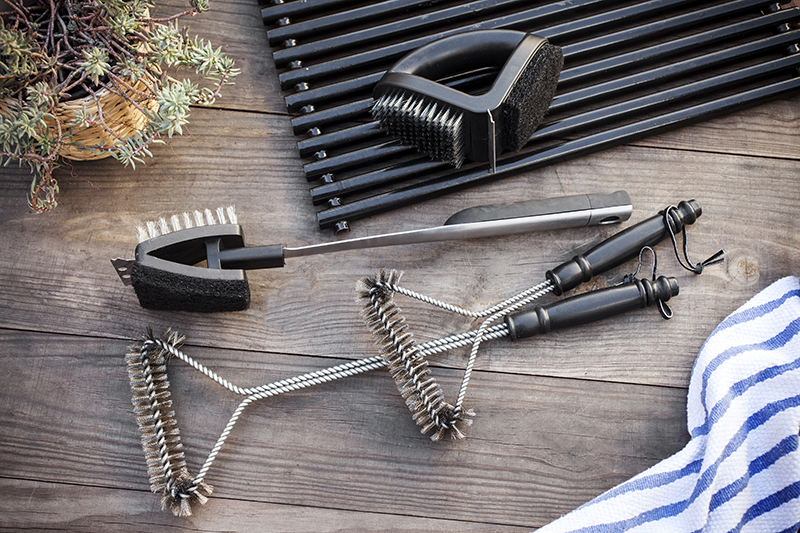
Tricks and Tips for a Clean and Safe Barbecue Experience
Well it’s inevitable, the time of year many people don’t look forward to is slowly creeping up on us once again, just as it does every year. It will soon be time to pull out warm clothes, pack up the yard and settle in for the winter. It will be here sooner than we realise as well with March and the beginning of autumn just around the corner. This should however, in no way deter you from barbecuing during the fall and the winter. Should you be fortunate enough to be in a tropical area and barbecue throughout the year or if you are part of the fast-growing trend in the South of barbecuing during the cooler months, a good rule of thumb is to ready your grill at the beginning of the spring and then again in the autumn, paying particular attention to cleaning and maintenance.
So what are some aspects of cleaning and maintaining a BBQ that aren’t as inherently obvious as buffing up the stainless steel and painted finishes on the outside? Properly cleaning and seasoning your grills and hotplates using the right techniques and tools, as well as checking for gas leaks, corrosion, falty connections and spider webs are all good practices that will ensure that your BBQ, tools and parts always function safely and last as long as possible.
Here are several points addressing WHAT NOT TO DO when cleaning and maintaining your barbecue.
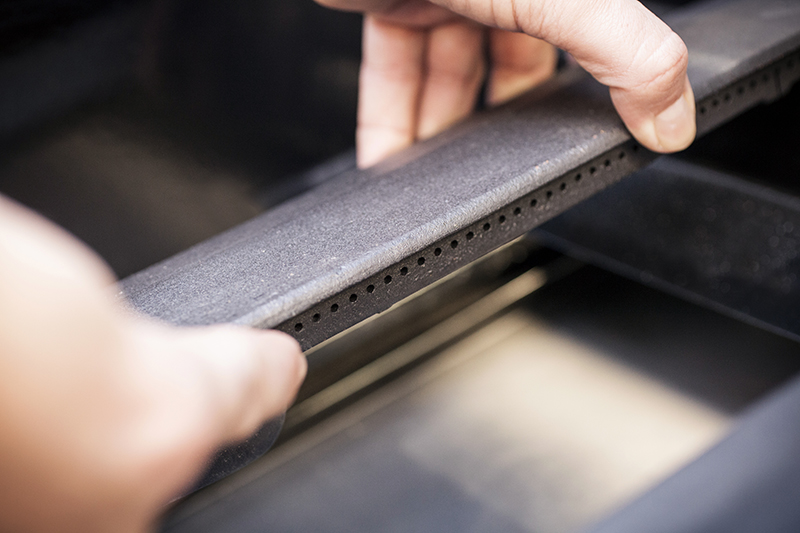
NEVER remove permanently fixed burners from your barbecue unless you are qualified to do so. The cast iron burner shown here is specifically made to be removed and reassembled easily for cleaning or replacement purposes.
- Never use abrasive cleaning tools such as steel wool or metal brushes on stainless steel or painted surfaces. The best method is to use warm water with a mild soap and rinse and dry the surface fully. Finish with a polish that’s especially recommended for stainless steel. If dirt is encrusted on any of the stainless steel and scrubbing is absolutely required, be sure to scrub in the direction of the grain, not across the grain or in a circular motion.
- Never use garden hoses or high pressure water cleaners. These will only push water, grease and grime around and often into sensitive parts. This can cause potential problems in the future and cause rusting in non-resistant areas.
- Never remove permanent burners from your barbecue unless you are qualified to do so and can reassemble them once they’ve been dismantled. For cleaning and storing purposes, removing the cast-iron burners (such as those depicted above) by removing the squid pin at the rear of the BBQ is fine provided they are returned to their original position.
- Never use extreme temperatures as a means for cleaning. Unlike pyrolytic (self-cleaning) ovens that heat to extremely high temperatures turning everything to ash, gas grills are not insulated and you run the possibility of destroying certain vital components and risk explosion.
Here are some simple things YOU SHOULD DO when cleaning your barbecue.
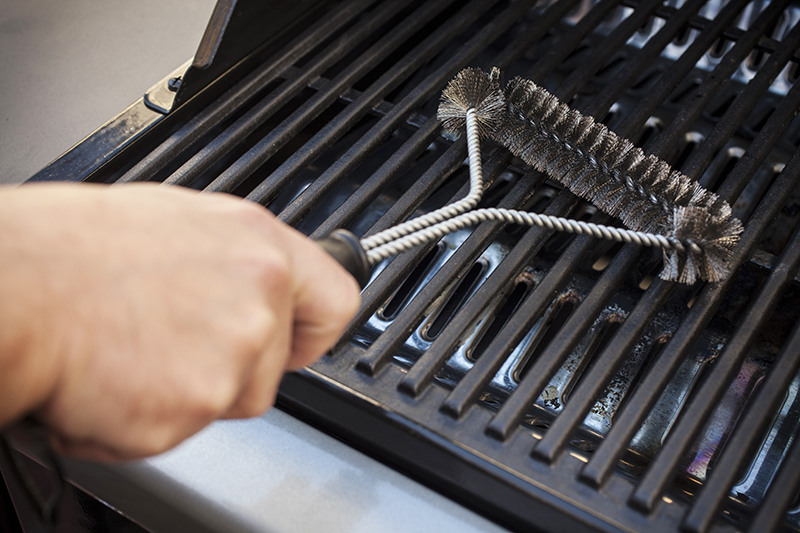
Cleaning your grills and hotplates while they are still warm makes removing food particles and grease a cinch! Click on the picture to view our cleaning tools and BBQ accessories.
Clean your grill or hotplate while it is still warm. If the barbecue is still warm you avoid the problem of stubborn grease and grime becoming encrusted on the grill or hotplate. Wire brushes and metal scrapers are just fine to use in this case. If your meal doesn’t allow for you to clean directly after use, simply place a heat-proof dish with warm water on the grill and bring it to a simmer. Turn off the barbecue and close the hood. The steam will keep everything moist making it easier to clean later-on. Alternatively, turn off the barbecue and place several old, wet, cotton cloths (ones suitable for cleaning with) on the warm (not hot) grill or hotplate, this will act in the same way as the steam. Be sure to use natural fibre cloths to avoid melting synthetic fibres. The same goes for synthetic scrubbers on a hot grill. A personal trick I use if the grill has cooled is to soak it in warm water with the recommended amount of powdered dishwasher soap for a regular load (about 3 tbsp or one dissolving tablet per 5 litres). Allow to soak for 3 hours, scrub, rinse and dry thoroughly before returning it to the BBQ. I also recommend using the dishwasher for steel grills but strongly advise against using the dishwasher for enamelled and pure cast iron. If the grill or hotplate is only lightly soiled, warm water and mild soap will suffice for cleaning.
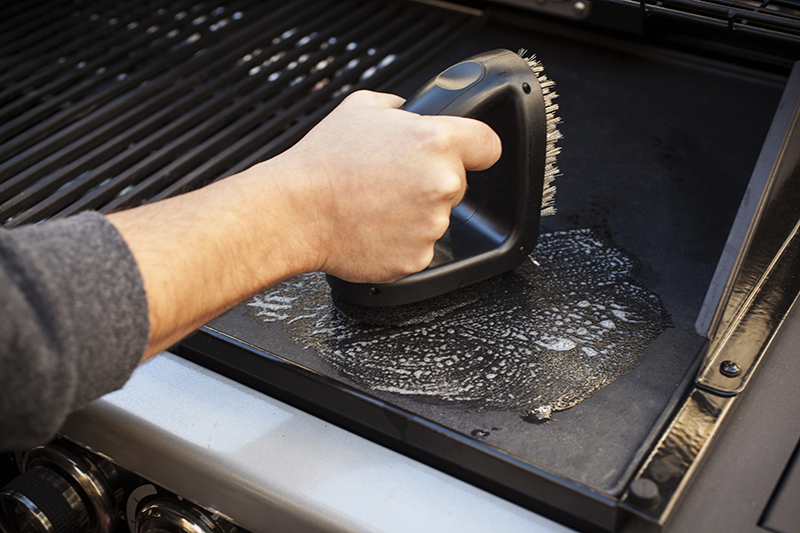
Use a synthetic scouring pad with water and a mild soap to clean your hotplate. Once lightly scrubbed, remove the hotplate and rinse with fresh water. Avoid any large amounts of water entering the combustion area of the BBQ. Lightly dry and return it to the barbecue. Turn on the barbecue and heat for 5 minutes to dry any remaining water. The same process may be applied to grills as well. Click on the picture for replacement grills and hotplates.
I always preheat my barbecue for about 20 minutes before using it. This will burn off any excess grease and food particles left over from the last use. It will also destroy any bacteria that may have formed. Prior to grilling, I advise a light scrub with a metal brush and seasoning your grill or hotplate by lightly brushing it with fresh oil and allowing it to preheat a further 10 minutes. Steer clear of spray oils in this case as aerosols should never be used near an open flame. Preheating your grill also has the added benefit of searing and sealing the foods you are preparing.

When you first light your barbecue, allow it to burn for 20 minutes, give it a light scrub with a wire brush, brush with oil and season as described above. Click on the picture for more great BBQ toolsets.
If the burners are not igniting or are burning yellow or orange instead of blue there are a variety of causes that can be attributed to this, such as food particles, grease, oxidation or spider webs. If the burners are easily removable without professional intervention, they should be removed and cleaned with warm water and a mild soap avoiding heavy water infiltration into the chamber. If the burner ports are clogged, a pipe-cleaner or toothpick can be used to unclog them. It’s also noteworthy that the ignition injectors can be cleaned using a toothpick or pipe-cleaner as well. When packing the BBQ away for extended periods of time and if your barbecue has cast-iron burners, grills or hotplates, they should be fully cleaned, brushed with mineral oil and wrapped in newspaper. This will avoid rusting. Note that I prefer the use of mineral oil or food-industry grade oil used for treating wooden chopping blocks. You may prefer the use of vegetable oil but bear in mind that it can go rancid or become sticky over long periods of time.
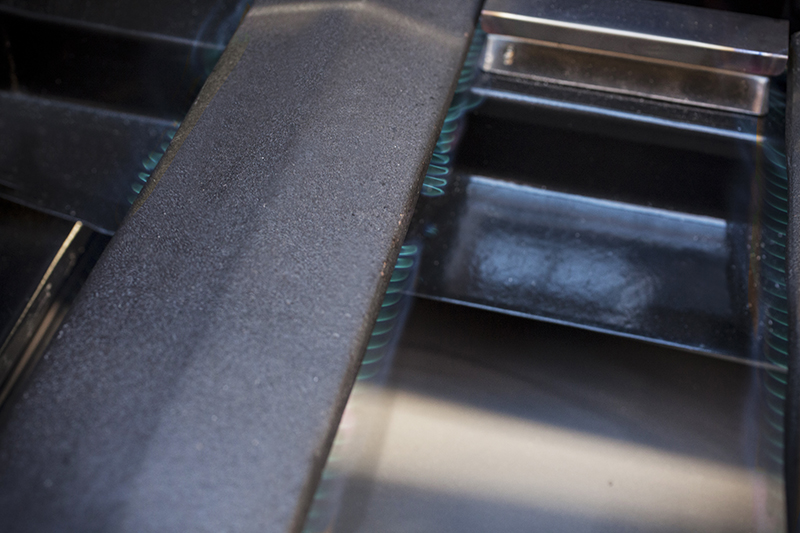
Enamelled cast iron burners burning hot blue. This is how the burners should perform.
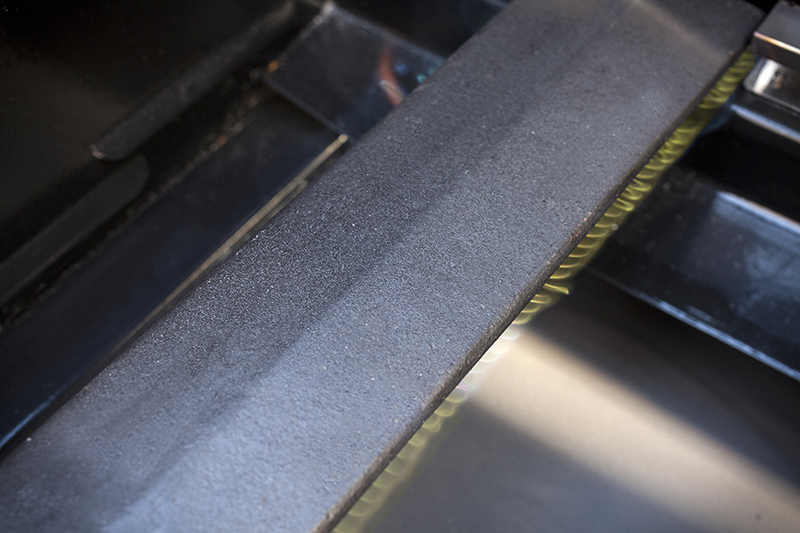
Spider webs and other debris can work their way in the hollow chamber of the burner and the tiny burner ports. This will affect their performance by not allowing proper flow and reducing heat. A yellow or orange flame is an indicator that something is wrong.
Whenever not in use, I strongly suggest the use of a barbecue cover to protect your grill from the elements. Barbecue enthusiasts in costal areas should particularly adhere to this rule as salt in the air will oxidise steel faster than in dryer areas.
I perform a soapy water test twice a year to check for gas leaks throughout the entire gas line, valves and manifold. It takes two minutes to perform and can be lifesaving. Mix one part dish soap to two parts water and brush over all surfaces relating to the gas and its connections.
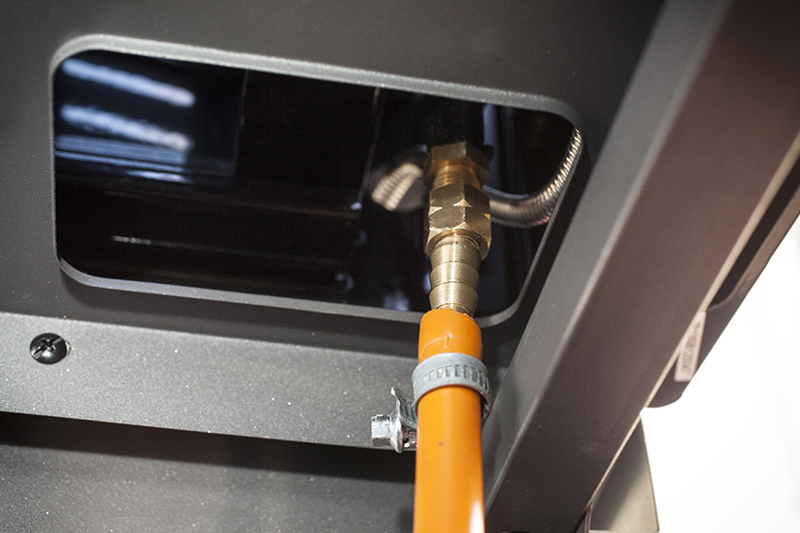
Check all the gas connections twice a year and every time the barbecue is moved. Inspect for cuts and cracks in PVC, rubber or other tubing material every so often. The connection in this picture is NOT SAFE and occurred during a move from one home to another.
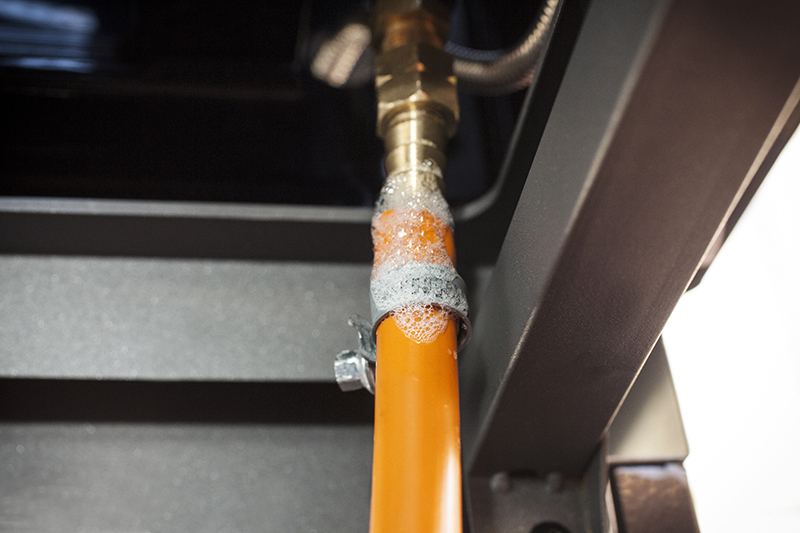
The soapy water test only takes two minutes to perform and ensures that all gas connections are safe. This picture above indicates a very dangerous gas connection.
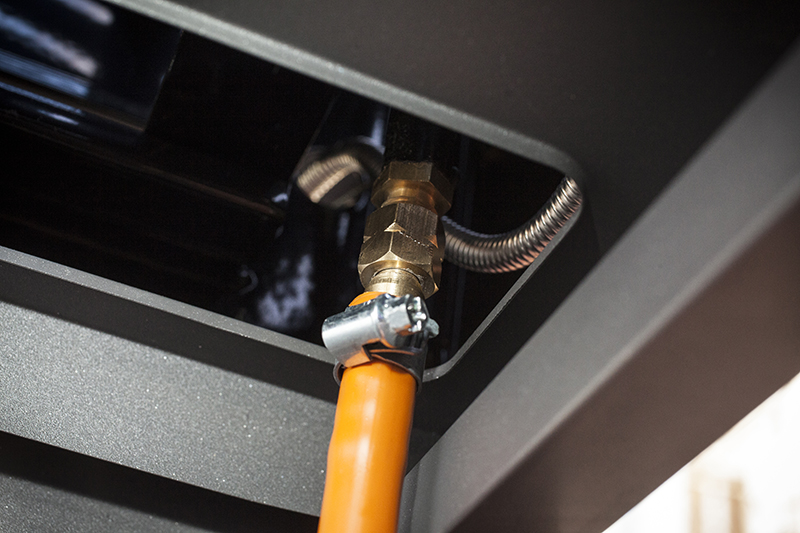
All connections should be tight and leak free as demonstrated here. When performing the soapy water test, there should be no bubbles emerging at any connection or along the hose. Need a new hose and regulator to replace an old dangerous one? Click on the picture to view our BBQXL replacement products.
If there’s a gas odour present while the BBQ is in use……..
- Turn the barbecue off at once.
- Turn off the gas cylinder and disconnect it from the regulator.
- Using a spanner and/or screw driver, tighten all gas fittings and couplings.
- Reconnect the gas cylinder and before igniting, check all gas connections and hoses by performing a soapy water leak test.
- Check your gas connections and lines for damage, cuts or cracks bi-annually.
- If the odour persists, DO NOT continue using the BBQ and contact a certified technician recommended by the manufacturer.

